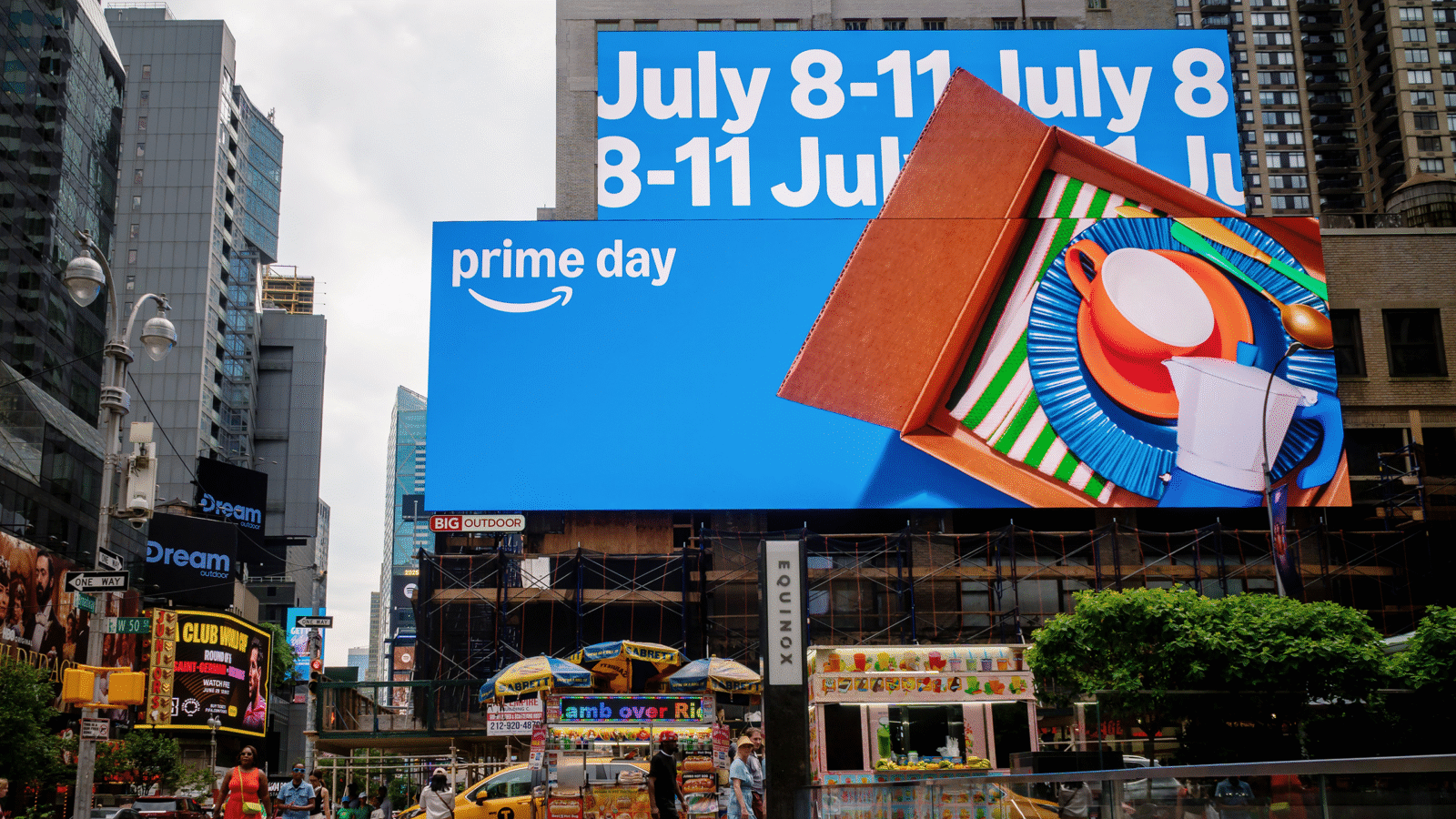Can Hollywood Reboot the Bundle?
Hollywood may be rethinking its business model of direct-to-consumer, a la carte streaming services — meaning the bundle may be back.

Sign up for smart news, insights, and analysis on the biggest financial stories of the day.
A month ago, Disney, Warner Bros. Discovery, and Fox announced a new joint venture that harkened back to the old days of cable: a single streaming platform, launching this fall, that will bundle together the three companies’ sports broadcast properties like ESPN, FS1, and the NBA and MLB programming found on Warner’s cable networks.
Meanwhile, Disney is working to combine its two disparate streaming services, Hulu and Disney+, into a single all-in-one package. Add to that rumors of a possible platform that would combine two streaming also-rans: Comcast’s Peacock and Paramount’s Paramount+.
But where some see a return of the bundle, others see just another patchwork effort by Hollywood’s legacy companies to cobble together a sustainable business plan amid the topsy-turvy transition — or death march — to an all-streaming world. Or worse: one final stop before the sector’s inevitable further consolidation.
Bundles of Fun
Everyone loves a bundle. Until they don’t. Airlines, for instance, once bundled seat selection and checked baggage with tickets. Not anymore.
In the heady days of traditional cable television, the bundle was the rising tide that lifted all boats, a halcyon period of socialized corporate strategy in which the average cable subscriber’s monthly bill was divided piecemeal via various carriage fees to any media company with a cable station.
That business still exists, of course, and it remains lucrative. But it’s dying fast. The rise of cord-cutting in the 2010s sent legacy media companies racing to create their own direct-to-consumer streaming services to compete for attention time with Netflix, while other players — like the horror-focused Shudder, the arthouse-focused Criterion Channel, or the NBA’s League Pass — sprouted up to serve specific niches of die-hard fans.
Economies of Fail: But it’s become increasingly clear that streaming is costly, and success depends on achieving economies of scale. That’s not easy. Just ask Netflix, which is finally breathing easy after a subscriber slip in 2022 triggered an industry-wide panic.
“It is becoming increasingly clear that Netflix has won the ‘streaming wars’,” Bank of America media analyst Jessica Reif Ehrlich declared in a note following Netflix’s recent 2023 fourth-quarter earnings call, in which the company reported record net income of $5.4 billion on the year on operating margins of 21%. All it took was years of exorbitant content costs and tens of billions of dollars of marketing spend to achieve 260 million global subscribers.
While Disney has been no slouch, with around 150 million Disney+ subscribers and another 49 million paying for Hulu (the two services are slowly merging in the US), most other legacy media competitors have a fraction of that reach:
- Comcast’s Peacock reported only 31 million subscribers at the end of 2023 (though an exclusively aired NFL playoff game since likely helped boost those numbers). The company also posted an adjusted Q4 loss of $825 million for the unit.
- Paramount announced just this week that its Paramount+ service, now bundled with the company’s Showtime streaming service, has 67.5 million subscribers. However, it still doesn’t expect the platform to achieve profitability until at least next year. The company’s share price has fallen by 70% since 2019.
- Warner Bros. Discovery’s Max — itself a bundle of sorts following a parent company merger that combined Warner’s HBOMax with Discovery+ — remains solidly in third place with 97 million subscribers. But last year marked the first time it was in the black, with an adjusted profit of $103 million (though last year’s dual labor strikes also brought a massive scale-back in content spending).
Meanwhile, subscriber growth has slowed across the board. After averaging a 26% annual increase from 2020 through 2022, domestic streaming services saw their user bases increase just 10% in 2023, according to research firm Antenna. It’s no wonder that a bundle is becoming so attractive.
Co-Efficient: Bundling brings obvious perks: streamlined technology and infrastructure costs, shared content production or acquisition costs, shared marketing budgets, and a theoretically wider user base to attract advertisers.
“Bundling makes sense because as content gets more expensive, you have better power, more negotiating power to negotiate deals with the content holders,” Mark Boidman, head of global media at investment bank Solomon Partners, told The Daily Upside.
Game On: That could explain the appeal behind the three-headed sports streaming venture that will bundle more than a dozen linear channels into one platform. In turn, that will bring virtually all the national TV rights for the NBA, MLB, and NHL into a single home, as well as about half of the NFL’s national broadcasts.
The three companies have each stated the move is intended to appeal to the now-majority of US households who have cut the cord and no longer pay for cable (while also hoping it doesn’t cannibalize its shrinking, but still lucrative, cable business in the process).
But the new bundle might also create leverage in negotiations for the increasingly important — and increasingly expensive — rights to live sports.
“In short, we do not expect an immediate impact on sports rights in the current iteration of this [joint venture] because ESPN, Fox and WBD are all expected to continue to independently bid on their own rights,” industry research firm MoffettNathanson wrote after the service’s announcement. “However, especially given the nature of long-term sports rights, we must consider what this new sports [joint venture] could evolve into that could change the shape and leverage of future sports rights negotiations.”
The NFL’s national TV rights deal is valued at over $110 billion, while the NBA is set to negotiate a new deal that could potentially be worth as much as $75 billion.
You Khan Count on Me: Still, bundling isn’t without risks. FTC Chairperson Lina Khan’s ears undoubtedly perked up after hearing that a joint sports streaming venture could potentially give its co-owners a competitive edge in negotiations.
In fact, Khan’s antitrust colleagues at the Department of Justice have already taken note of the plan, sources told Bloomberg last month, with the DOJ likely to investigate how it could harm consumers, media rivals, and sports leagues. One media rival — sports streaming service FuboTV, which offers access to live cable channels via streaming — has already sued to block the joint venture, alleging the companies are barring it from carrying a small bundle of sports channels that are now planned to be included in the new mega bundle.
A joint venture would receive the same amount of antitrust scrutiny and its impact on competition in adjacent markets would be judged on the same criteria as a merger or acquisition, Spencer Waller, Director of the Institute for Consumer Antitrust Studies and Professor at Loyola University Chicago School of Law, told The Daily Upside.
Scrutiny would also likely come for any Peacock and Paramount+ merger or joint venture, which has been discussed by company executives, according to a recent Wall Street Journal report. The services are already effectively bundled together under the name SkyShowtime in a handful of European markets. Paramount board members are also considering selling the entire company outright, an action sure to trigger antitrust scrutiny.
Hulu Hoop: This wouldn’t be the first time legacy media players combined to create something new in the streaming landscape. In 2007, NBCUniversal (then a subsidiary of General Electric), News Corp (then the owner of 21st Century Fox), and the media-focused Providence Equity, among others, launched Hulu. By 2009, Disney joined the stakeholders, and by 2016, Time Warner had acquired a 10% stake.
Initially serving as something of a legacy media salve against the ascendant streaming space, Hulu quickly took off, and even considered an IPO. But it also struggled under the weight of joint ownership, with each parent company pursuing streaming strategies of their own which could be described as counter-intuitive. Disney, for instance, signed a lucrative multi-year content licensing deal with Netflix in 2012, meaning it was sending its popular and iconic movies to a competitor platform instead of the one it co-owned. Disney now owns Hulu entirely after acquiring 21st Century Fox in 2019 and buying the remaining stake from Comcast last year.
Hulu’s legacy may ultimately be a cautionary tale for cross-corporate bundles in the streaming realm. “Unraveling [a bundle], as we’ve seen, can be interesting and complicated… shareholder and company objectives change over time,” Boidman told The Daily Upside. “While a partnership may be interesting today, it may not be as interesting in five years from now.”
Of course, by then we may be living in a media world run entirely by Netflix, Amazon, Alphabet, and Apple.











